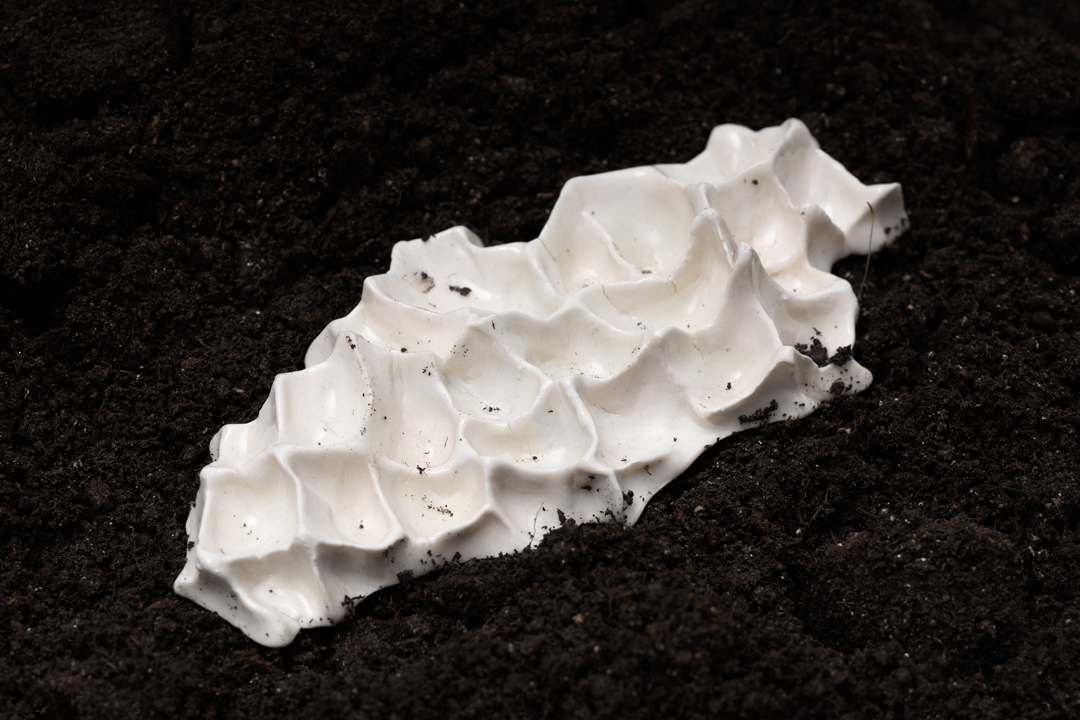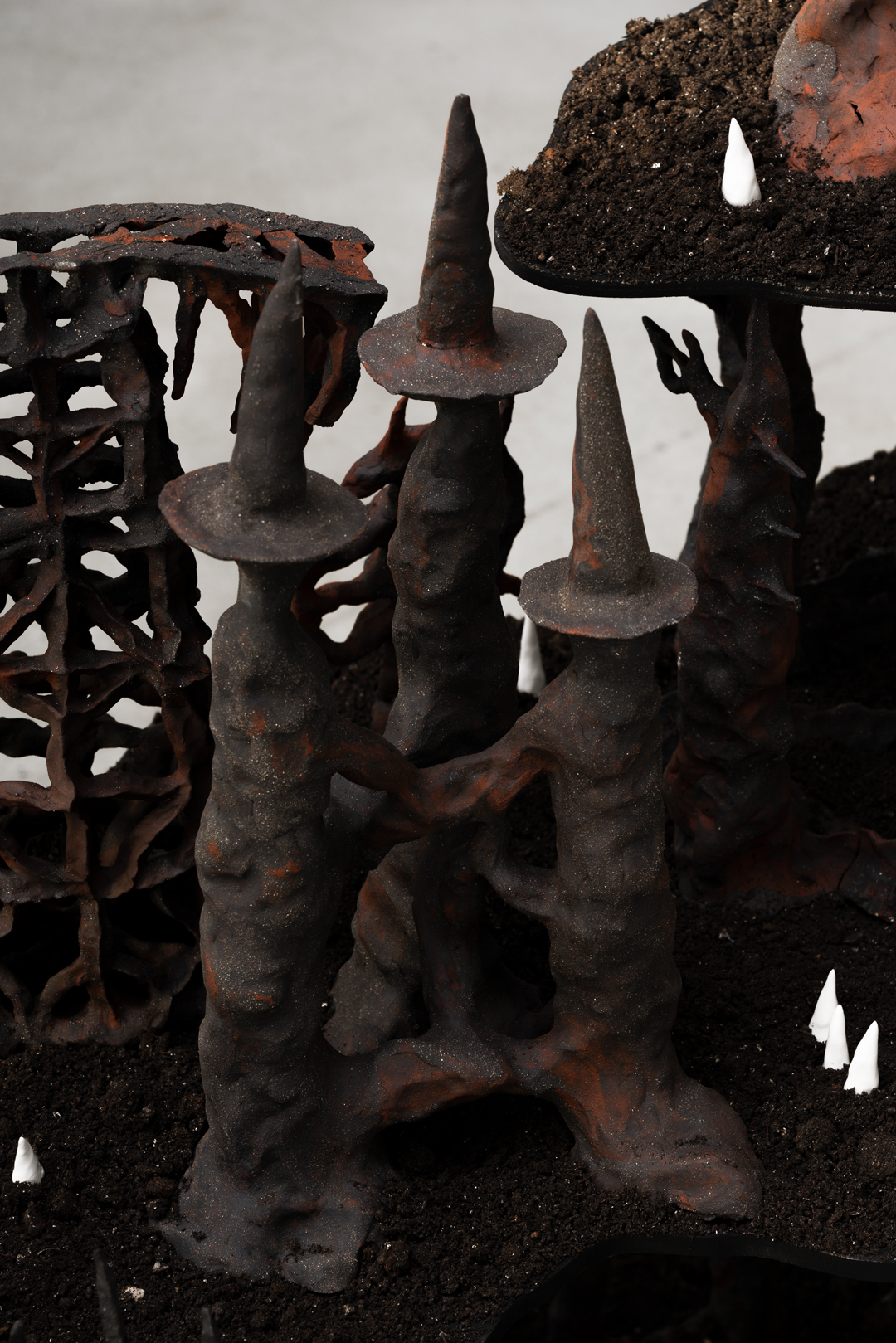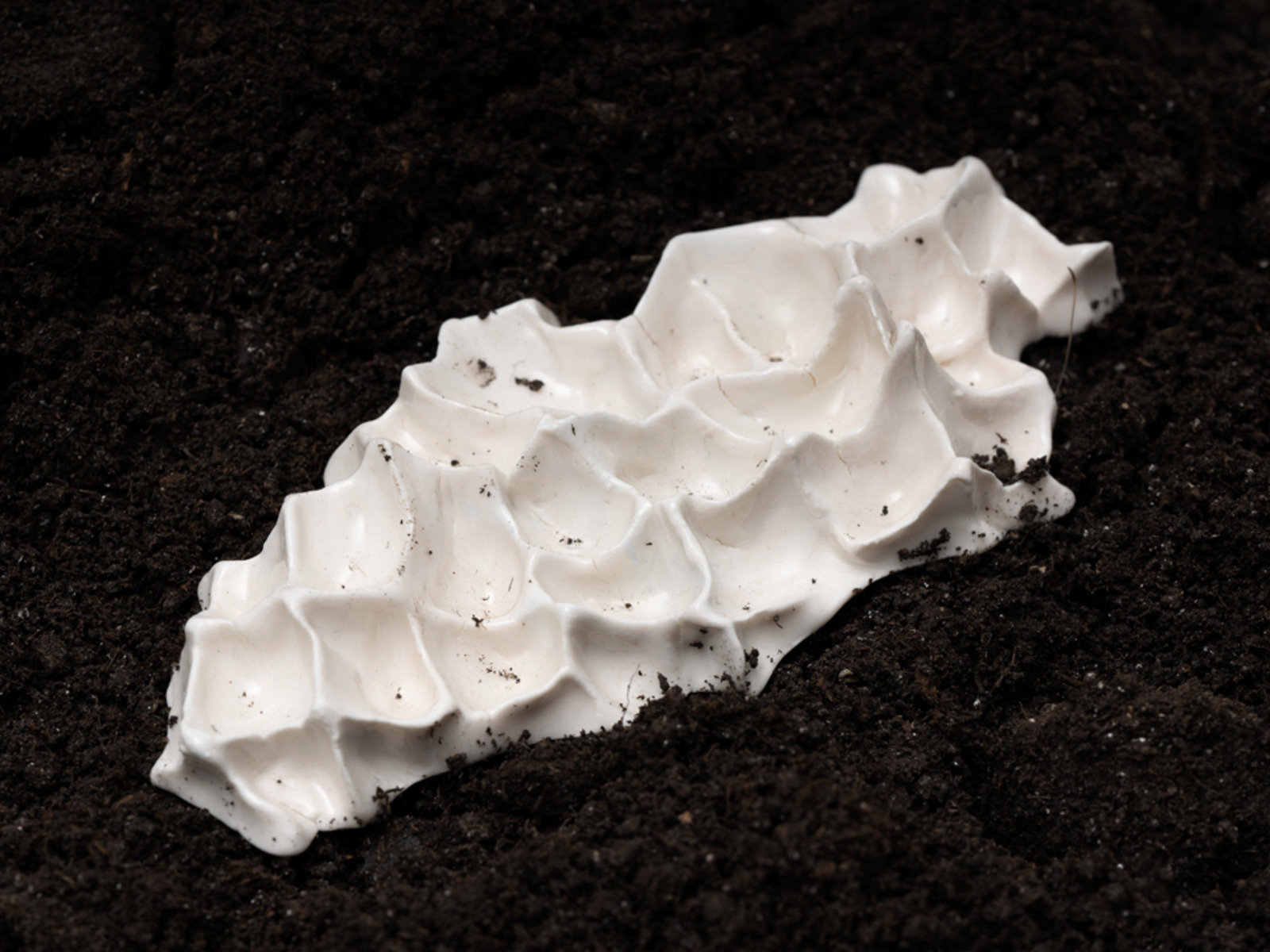ZSOLT MIKLÓSVÖLGYI SPLITTERTOWN: STACH SZUMSKI’S AUTO-POETICS
Cultural critic Zsolt Miklósvölgyi engages in a fascinating discussion with Polish artist Stach Szumski. The premise of this exchange is provided by the latter’s exhibition in Budapest, entitled Splittertown, and the sources of identification in his visual practice: from the free tekno scene to geological formations in south Poland, from the local graffiti scene to the area’s (urban) decay and forced modernization.
Zsolt Miklósvölgyi:
Your recent exhibition at the Studio of Young Artist’s (FKSE) in Budapest was titled “Splittertown”. You also did a wall painting session together with Botond Keresztesi at the “Art Quarter Budapest” (AQB) in Budafok, and did another collaborative pop-up exhibition with Áron Lőrincz at the “Everybody Needs Art” (ENA) art space. To begin with, I would like to ask about the title of your show at the Studio? Can you please elaborate, what is “Splittertown”?
Stach Szumski:
It’s coming from the direct core of the whole exhibition, which was a painting made by my grand-uncle, Zbigniew Ralicki. He painted both abstract and figurative paintings, but his main visual forms were related to some imagined agglomerations. I think they are partly based on his observations, as he was hospitalizing himself in sanatorium resorts in Southern Poland due to his illness. But these areas were not only sanitary zones but were also rich in coal mining infrastructures. I think he was subconsciously absorbing a lot of those surroundings, those architectonic motifs, and has blended them into his approach to constructing imaginary cities in which you cannot tell what is the part of the mining infrastructure and what are his architectonic constructs. In other words, in these visions, it is hard to separate where the end of the real construction is and where his imagination starts.
ZM:
In this sense, one can say that one of the key resources of inspiration for you is coming from the realm of hyper-urbanization which starts with the industrial revolution but became prevalent during the 20th century. This is a process that radically terraformed not only the landscape of Poland but rural and agricultural areas all over Eastern Europe. This somehow also reminded me of one of your previous exhibitions that was focusing on the concept of “thermo-modernization”. In that project, throughout the lens of archeo-futurological sensibility, you envisioned imaginary tribes and cults, whether it be an urban subculture of secret graffiti collectives or some proto-Slavic cultural formations, whose cultural traces could be hidden behind the layers of thermal insulation. Is it fair to say that this kind of collision between the urban and rural spheres is a crucial topic of your art?
SS:
Yes, it is part of the very core of creativity. I like doing urban interventions and observing cities in general, but at the same time, I always try to do it from the outsider perspective of a villager. So I find true fascination in visiting cities, to explore them and to observe some tectonic happenings, as in the case of the thermo-modernization. I have been interested in this kind of research for some years now. What amazes me, for instance, is the destroying aspect of how the Styrofoam coating of old architecture starts to redefine a shape’s architectonic details and shields hidden historical layers beneath these new coating surfaces. So you are right, I like to develop different archaeological approaches to topics related to the problem of the City, which is halfway between physical and improvised-imagined cities. In that sense, I do resonate with the aesthetic and artistic interest of my grand-uncle whose energy, in return, also resonates in my work.



ZM:
In the exhibition interior at the Studio, one of the dominant artwork of your installation was a huge, fictitious landscape or architectonic formation that was made out of ceramic or clay. Which, then, was in dialogue with two paintings of your grand-uncle that were worn by age. I assume that at the beginning these paintings were more vibrant, colorful. Do you think that the fainting of their colors now also adds to their aesthetic quality?
SS:
Yes, but the truth is that he did not preserve the paintings properly. And thus they are in a kind of permanent degeneration. This is a process I still need to think and understand, whether there are some perspectives and possibilities of preserving them.

ZM:
Besides the paintings and the ceramic installation, there were also soil formations arranged on the floor, reminding the visitors of some kind of residues of an excavation process. And then there’s a gigantic wall painting that also functions as a sort of backdrop for one of your grand-uncle’s paintings that depicts the previously mentioned weird blend of an imaginative industrial city and an actual agglomeration of Southern Poland. I have noticed resemblances between these ceramic architectural formations and the paintings. There was also one cut-out textile work taped onto the wall, arranged somehow above the optimal optical height, thus forcing the visitors to look upwards. This looked like a cut out from a bigger picture...
SS:
This symbol is also coming from one of my grand-uncle’s drawings because he was also creating that sort of abstract symbolism that was somewhere between some architectonic shape and lettering. So they kind of look like over-scaled logos of him that appeared in one of his sketches, which I then reconstructed and turned into something that was meant to resemble a sort of imaginary hole on the wall.

ZM:
It seems to me that in your art you are also seeking, as the Situationists said, an imaginary beach or alternative reality hidden “beneath the pavement”. Is it fair to say that this kind of archeo-imaginative excavation approach is central in your works?
SS:
Yes, it is central. Just like in the previously mentioned thermo-modernization project, that was a sort of archaeological simulation of the process of excavating or accessing the layers of graffiti paintings that are underneath the Styrofoam layer. It is like a sort of imaginary hole through which you can look in layers of thermo-modernization. But it also functions as a fictitious memorial of archaic graffitis around Poland that ended up being well preserved somehow beneath the Styrofoam coatings. So it is also a kind of futuristic speculation envisioning an imaginary future when some graffiti-archaeologist movement aims at digging the holes through the Styrofoam layers to reach some sort of archaic graffitis because they believe that, for example, the first graffiti from nineties Poland have a real cultural value that needs to be excavated.
ZM:
In one of your previous interviews you also mentioned that you have an ambivalent experience with studying art in the art academy environment in Warsaw. But you have concluded at the end that in a way this ambivalent experience with academic art has also had a positive impact on you since you realized that you are not interested in aligning with the direction you were being pushed into by professors and the professional art scene. Is this kind of creative resistance also coming from your early experiences with the graffiti scene?
SS:
I never educated myself through some academic dimensions in terms of drawing or painting. For me, it was all coming from graffiti and from spraying and spreading the paint with some different types of overalls or airbrushes.
ZM:
You also have a signature technique, one might say, a specific type of distribution of the paint material from the can that results in an interesting gradient-like shaping of lines that gives a gradient backdrop effect to the edges of your motifs. I remember when we were in Ljubljana together and you were drawing a train bomb with a “baby-can”, and you said that besides the aesthetic quality of your technique, it is also coming from the perspective of the economization of the paint. How has this particular technique of yours exactly evolved?
SS:
In the first few years I was trying to somehow imitate this shading, but it took me some years to understand that I can just change the angle of spraying and in the rhythm of doing a single line you can just achieve the effect of the sharp line plus gradient flowing inside. But for the first few years, I was only experimenting with it. One day, all of a sudden, via multiplying lines and shadows, it just clicked in, and from that moment I started to switch the angle more consciously, and then this shading approach evolved further naturally.

ZM:
In the “Splittertown” exhibition you used this method on a huge wall painting I was referring to earlier that somehow also provides a backdrop for the painting we were talking about. But what is more interesting in this is that it serves not only as a backdrop, but it also operates as a gigantic abstract painting that has its aesthetic value and quality that is in dialogue with your grand-uncle’s figurative painting. Through altering this specific shading technique, the motifs started to resemble as if the wall had been infected by some kind of insect swarm or parasitic legion...
SS:
Yes, exactly, I also wanted to practice this kind of insect-like approach as a sort of automatic improvisation technique that results in an almost generative composition. I went kind of automatic with those lines, just like a wood-eating insect, just following one line and then connecting it randomly with another. This kind of generative randomness in terms of decisions about the directions of how and to where the line will go definitely characterizes the whole painting.
ZM:
It also reminds me of the auto-poetic approach of the Surrealists. How do you balance between this kind of trust in the auto-poetic technique and this kind of archaic urge of immediate self-expression that also characterizes graffiti? And where is the place for self-reflection and conceptualization in all that?
SS:
I think it depends on specific circumstances because I follow some very automatized non-cognitive type of approach where I just let the flow of improvisation happen. But I also use this technique sometimes for more precise narrative-related forms or symbolic research. So, if I can, I try to practice both approaches in parallel with each other. In terms of inspiration, my main sources are always out of the art universe, coming from archaic forms or traces of proto-creativity. Last year my interest also started to drift to different cultures, partly because of recent travel experiences. For instance, I stayed some months in Java, Indonesia, but I was also documenting petroglyphs around the Altai Mountains in Siberia. I have always been interested in the emergence of forms, starting from the archaic origins of symbols. I think these proto-symbolic dimensions have always represented a key inspiration in my visual practices.
ZM:
But besides these archaic cultural forms, do you also find inspiration in natural formations, whether it be mineral, microbial, geological or crystal formations or rocks, mountains, large-scale landscapes?
SS:
Yes, I think, at least on some subconscious level for sure, these things have also influenced me a lot, because I was growing up surrounded by massive granite rock formations, which were eroded over millions of years by airing. Those shapes strongly influenced me somehow. Together with a friend of mine, I have been working on a macro-photographic database of lichens from our region for a while, so I am also interested in these kinds of organic textures and formations, which then, also impact my painting practice. Even though I tend to treat these geological forms of research as a side interest, I started to aggregate some sort of geo-morphological understanding of how life possibly evolves in proto-organisms, or how magmatic landscapes of pure granite were formed. These things are literally underneath or around my hometown, and I can observe these things very thoroughly, and then these observations heavily affect my art-related thinking.





ZM:
We already talked about your interest in proto-symbolic cultural forms, as well as about your observations about geological and natural formations. But you are also heavily influenced by other realms of subcultures, whether it be hip hop, graffiti, or experimental noise music.
SS:
Yeah, I think that it’s another element that shaped my art. I am talking about the fact that in our region in terms of experimental electronic music there weren’t many perspectives for exploring musical venues and scenes. But I grew up in the illegal techno party culture of Southern Poland that was influenced by the Czech techno of that time. In the Czech Republic of the early 1990s, the free tekno scene was very strong due to the migration of the original Spiral Tribe movement from the UK. As a result of this, an enormous amount of Czech techno collectives were founded and everyone started to build their sound systems and organize illegal raves all over the country. As I already mentioned, my home village is up in the Karkonosze Mountains, near the Czech-Polish borders. Due to the geographical proximity of the Czech scene, the culture of self-organized illegal techno parties was also common in our region so these were crucial influences for me. I also have some background in classical music, as I studied the trumpet. My best friend ever since high school, Michał Ziń, is also a sound engineer who constructed his own sound system, which he located in a place called Atelier Wolimierz, a post railway hangar. It was like a warehouse that became an important alternative cultural place. This area has a kind of outlaw-ish anarchist vibe with a big and vibrant community forming around it. After the Second World War during the time of repatriation, the population of this region decreased significantly. In the 1980s, there weren’t many people around, and thus the local architecture was decaying and largely stayed empty. After a while, there was one big wave of migration of people who wanted to run away from cities. They collectively settled there and it became a sort of outlaw territory with some kind of freedom, which is also related to self-proclaimed cultural activities. That’s why rave parties became also socially accepted in this region and they happened quite frequently. For six years or so Michał has also organized here an experimental electronic music and noise festival called Borderline. Through these festivals and free milieu, I started to build a deeper understanding of how I would like to approach the creation of electronic music or art in general.












Artist: Stach Szumski
Title of the exhibition: Splittertown
Curators: Useless Galeri (Luca Petrányi & Fanni Solymár)
Venue: Studio of Young Artists’s Association, Budapest
Dates: 10.11.2021—24.11.2021
STACH SZUMSKI is a Polish artist who graduated from the Department of Media Arts at the University of Fine Arts in Warsaw. As an artist, he often experiments with various media and techniques. One side of his artistic practice is based on his long-lasting passion and presence as a graffiti artist. He developed a unique painting technique through the method of wall-painting that became his “credit” on his artworks as well. Since 2007, he has been exploring and “inhabiting” abandoned buildings with large-scale murals. These buildings are highlighted from the brutalist architectural monuments inherited from socialism, thus generating a dialogue with this stage of historical past. Szumski’s site-specific works interpreted to gallery spaces are also dealing with the relationship of the space and the artworks. His works often settle as parasites on the walls, at different spots of the spaces. His artistic attitude is characterized by the deconstruction and manipulation of spaces using different media. His subjects are occupied by various macro-organisms, natural formations, myths, demons, mysticism and the afterlife.
ZSOLT MIKLÓSVÖLGYI is a critic, editor, and art writer from Budapest, Hungary. He is the Editor-in-Chief of the Artportal.hu art magazine, Co-Editor-in-Chief of the Berlin-Budapest-based art collective and publishing project Technologie und das Unheimliche (T+U), and editor of the Café Bábel essay journal. His ongoing (para)academic, artistic and curatorial interests include post-digital printing, comparative ethnofuturism, spatial and geopoetic speculations.
USELESS GALERI
???????: not fulfilling or not expected to achieve the intended purpose or desired outcome
??????: closed group; a company formed in the common interest or on the basis of the same interest
Useless Galeri is a curator collective of Lucia Petrányi and Fanni Solymár. The group aspires to organise art based events or projects that tries to circumvent or go beyond conventional frameworks of the artscene. A project is seen as a complex whole in which space, artworks, and the co-arts are closely intertwined.
Image credits: Digitális Képműhely
